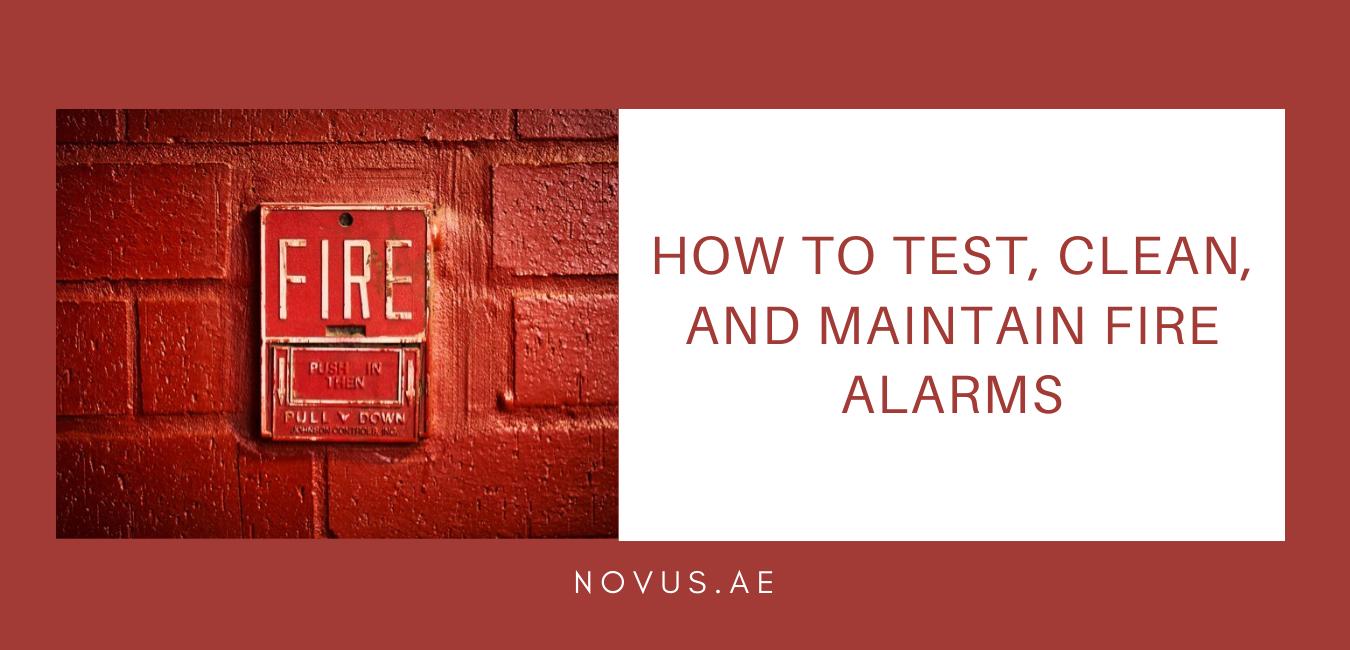How To Test, Clean, And Maintain Fire Alarms
Any building's safety system must have fire alarms since they can provide early notice and preserve lives and property that is in danger of fire. It is true, nevertheless, that in order for fire alarms to function when needed, they need to be tested frequently, meticulously cleaned, and carefully maintained. In this in-depth guide, we will explore why fire alarm maintenance is so important and show you how to test, clean and maintain these life-saving devices.
The need for Fire Alarm Maintenance
Early Detection Saves Lives
The primary purpose of fire alarms is to promptly alert people to the presence of smoke or fire so that they can quickly leave the building and call for help. Keeping them in good working order will stop erroneous alerts or, worse, a breakdown when they're most required.
Compliance with Regulations
The majority of municipal and national building rules mandate the regular examination and maintenance of fire alarm systems. In addition to protecting building occupants from legal ramifications for noncompliance, compliance ensures building occupant safety.
Testing Fire Alarms
Conducting Regular Functional Tests
To be sure all parts are functioning properly; you need to conduct functional fire alarm tests. For example, the alarm sound and strobe lights (if any) are checked; communication with the central monitoring system is attempted.
Testing with Simulated Smoke
Smoke testing plays a big role in determining your alarms smoke detection capabilities. To safely introduce a smoke-like substance, provided in test kits, into the alarm's sensing chamber follow manufacturer guidelines.
Testing Manual Call Points
If your fire alarm system features manual call points, be sure to have them tested frequently. These points can be activated in order to test whether or not alarm signals are getting to the monitoring station and that the alarm system itself is working properly.
Cleaning Fire Alarms
Dust and Debris Removal
After a period of time, dust and filth may accumulate on the sensors which can make it less sensitive. Wipe away particles with a soft brush or compressed air, following manufacturer's instructions to prevent damage.
Cleaning Smoke Chambers
Clean the smoke chambers regularly for smoke detection alarms. To maintain optimal sensitivity, follow the manufacturer's instructions for disassembly, cleaning and reassembly.
Fire Alarm Maintenance Best Practices
Regular Inspections
Check your fire alarm system visually on a regular basis. Check for physical damage, loose connections or worn-out parts. Solve any problems right away so that disasters don't result.
Battery Checks and Replacement
Additionally, if your alarm runs on batteries, check their condition and replace them on a regular basis as directed by the manufacturer. The battery means the alarm doesn't give up when power is lost.
Software and Firmware Updates
Find and install any software or firmware updates that the manufacturer provides for it to keep your fire alarm system current. Highly compatible with the most advanced technologies and eliminates any potential security risks.
Professional Maintenance
Have a qualified technician do thorough checks and routine maintenance work at least once every year. Professionals can find problems that might otherwise go undiscovered from the usual tests, and provide suggestions.
Conclusion
As important as the installation of a fire alarm system is fire alarm testing and maintenance. These actions will ensure compliance with safety rules, make your building and its people safer and more equipped to withstand a fire, and reduce the number of false alarm calls. One of the most important things in an emergency situation is having a functional fire alarm system.







